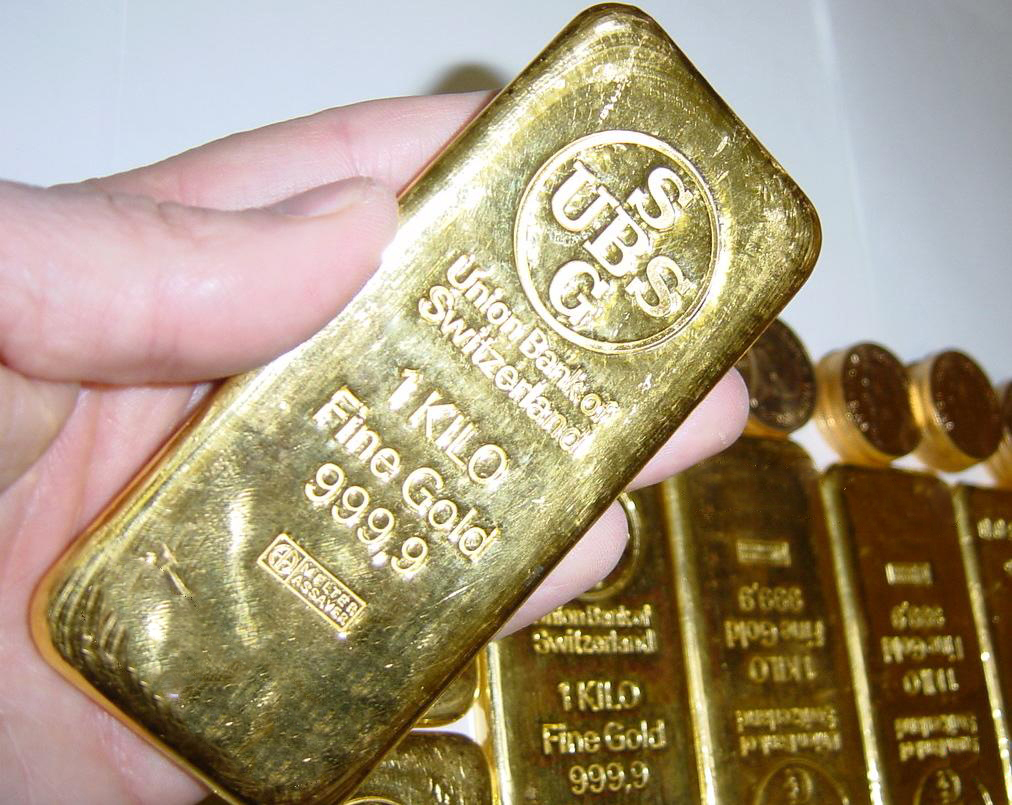Gold

Gold Ingot
Gold
The remarkable properties of pure metallic gold are as follows: It is the most ductile and ductile metal and an unusual color for elements of this class. It is largely non-reactive, conducts electricity well and is extremely dense. The density of the gold contributed to its relative rarity, since gold, which was present at the origin of the earth, had mostly sunk into the core of the planet. It is therefore believed that virtually all gold discovered by humans was deposited much later by meteorites containing the element. The low reactivity of gold explains why the metal was known in ancient societies despite its rarity: unlike most metals, it mainly occurs in its elemental form.
The rarity of gold combined with the ease with which it can be worked, its optical distinctiveness and its resistance to chemical corrosion made it an extremely unusual material and an object of great fascination. It was therefore a natural choice to use it as a symbol of ornamental status and currency unit. The oldest known gold artefacts come from the 4. Millennium BC And the first gold coins (actually made of electrum, a natural gold-silver alloy) were used in today's Turkey around 600 v. Chr. Stamped. Gold remained in the 20 for much of the world. It was an important component of the monetary system in the 19th century, as most developed countries used a gold standard to support their currencies, even as gold coins became rarer. During the First World War gold standards began to give up, and over time all modern industrialized nations switched to Fiat currency systems.

The biggest gold nugget found
Despite gold's decline from an official monetary function, it is still widely regarded as valuable and used as an investment metal or a means of storing wealth. Many hoard it as a hedge against inflation, and gold continues to be a common metal in fine jewelry. These functions still consume most of the gold produced, despite a large number of other uses for the metal. Gold and mercury amalgams have long been used in restorative dentistry for fillings and crowns. However, concerns about mercury toxicity and the increasing availability of suitable composite materials as substitutes have resulted in a decline in demand. Gold also has many uses in electronics, where its high conductivity makes it attractive for wiring or as a coating for more easily corrosive metals. Circuit boards often have such thin gold protective layers. Thin gold films are useful for a variety of other functions as well. Gold can be made so thin that it appears transparent, so it can be used in windows - for example in aircraft windshields - which can then be de-iced by passing electricity through the conductive film. Gold films are also excellent reflectors for electromagnetic radiation, including infrared light and radio waves, and are therefore used in infrared mirrors, heat shields, and protective coatings on satellites and other equipment.
Despite its low reactivity, it has long been recognized that gold can be dissolved in nitro-hydrochloric acid (aqua regia) and forms some compounds, including gold chlorides, gold oxides and thiosulfates (such as gold sodium thiosulfate), and many gold applications relate to these less familiar forms. Gold chloride solutions made by dissolving gold in aqua regia have been used to make cranberry glass, the bright red color of which is known to be due to glass-dispersed nanoscale gold particles.

Gold as a jewelry and status symbol
Suspensions of such gold particles in liquids, also referred to as colloidal gold, are of great interest because of their unique optical and electrical properties as well as their potential for useful interactions with biological systems. The electromagnetic absorption of gold collodion solutions can be adjusted based on the particle size. This is a useful feature with the side effect of creating solutions that range in color from red to blue. Such solutions can be used in printable conductive inks for electronics, for the manufacture of sensors and photovoltaics and for the production of microscopy samples.
In modern biology, there is a significant history in which minute gold particles are bound to a variety of biological probes that are commonly used in electron microscopy. The High Electron Density of Gold Particles Facilitates Visualization This type of gold nanoparticle is used in medicine to target specific tissues or cell types, including cancer cells. As a result, they can be used to detect cancer cell sites and site-specific delivery of drugs and other therapeutic agents (including small RNA molecules being studied for use as gene therapy). In addition, gold nanostave structures absorb near-infrared light that easily penetrates through many human tissues. This fact has been exploited in cancer treatment: the heat generated by absorbing light in the near infrared from the rods kills the cells that contain them, leaving the surrounding cells largely intact.
Gold is most commonly found as a standalone metal or as a natural gold-silver alloy. Most of the gold is recovered in this form from either Lode or Placer deposits, and a small amount is produced as a by-product of base metal processing. In addition, gold is often recycled from scrap, and many financial institutions still have significant gold reserves.
Gold price
- Prices for gold -> prices for high purity metals
- Prices for rare earths
- Prices for strategic metals
- Prices for base metals
- Prices for high-purity metals
